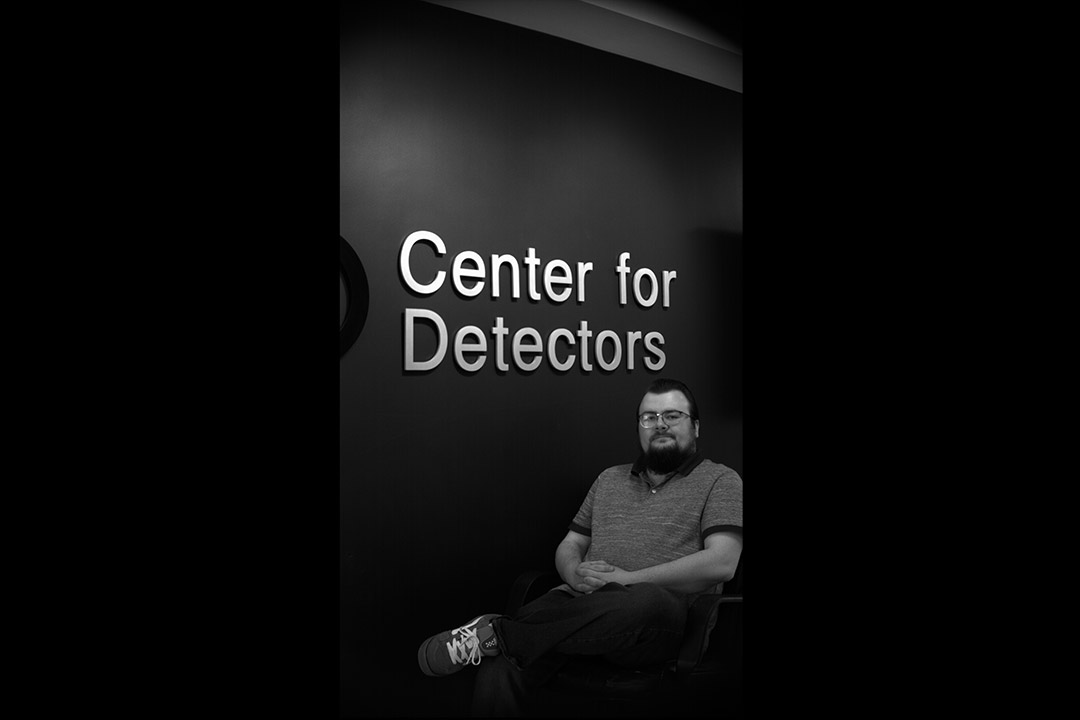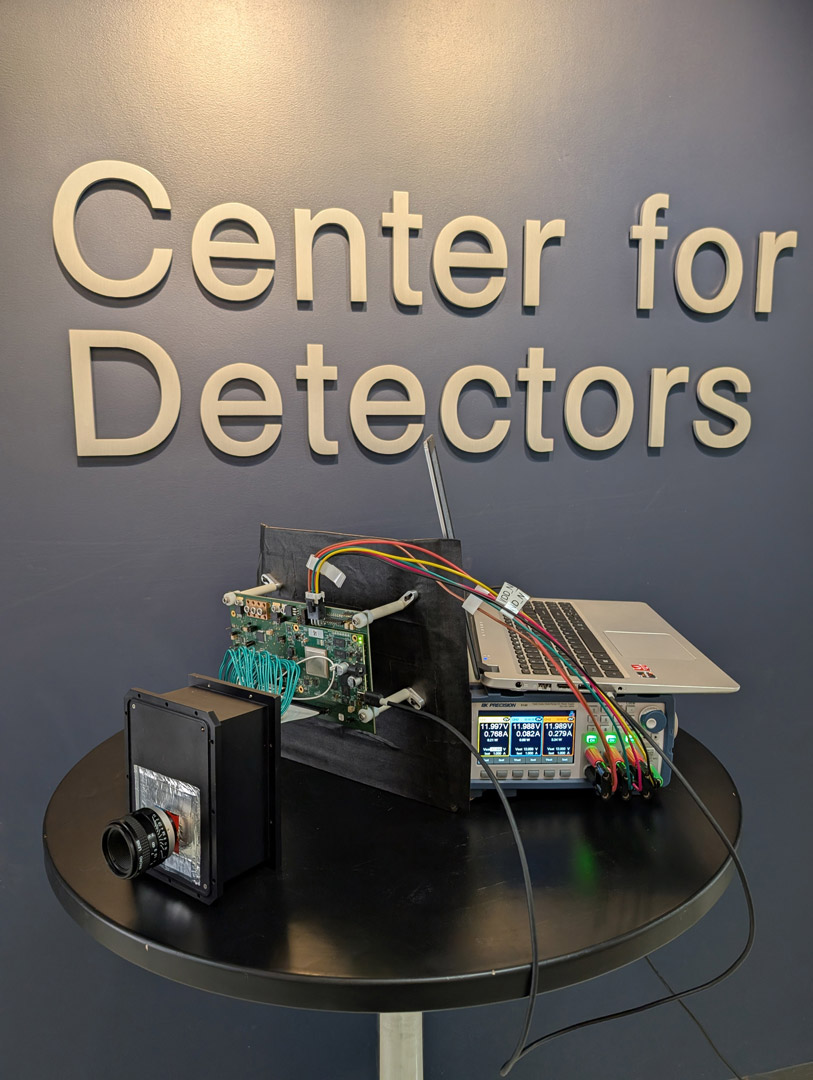Center for Detectors reached milestone in NASA-funded project
The center recently achieves first light image
Center for Detectors
This first light image marks a milestone in a NASA-funded research project for the Center for Detectors.
Hard work is paying off for the Center for Detectors as the team has recently achieved a first light using a single photon imaging detector for a NASA-funded project.
The center is working to advance and characterize single-photon sensing CMOS image sensors to determine if they can survive the harsh radiation environments in NASA missions. A successful image was recently captured, providing a milestone in the project. An interdisciplinary team has been working for more than a year on this specific project to create a sensor that can survive longer in space.
Center for Detectors
An interdisciplinary team developed detector electronics shown here to achieve the first light image.
“We are developing technology to detect alien life in the universe,” said center Director Don Figer. “Our work supports the biggest future NASA space telescope mission, the Habitable Worlds Observatory. For this project, NASA gave us $2.5 million through the Science Mission Directorate and the Space Technology Mission Directorate.”
The Center for Detectors employs experts across many campus departments to work on the various components of the project. Knowledge of software, optics, mechanical engineering, thermal design, electrical design, and more is needed to make the technology possible.
“NASA needs to know how well a detector works before they can use it in a future mission,” said engineer Justin Gallagher ’20 (physics), ’20 MS (astrophysics and technology). “To measure the presence of life on other planets, detectors in future missions may only receive a few photons of light per hour. We want to show that these new sensors can maintain this extreme sensitivity while exposed to the harsh radiation conditions in space.”
One of the youngest members of the interdisciplinary team is third-year computer engineering major Anthony Doan, who began working at the center through a co-op. Doan worked on the software that takes in a reading from the sensor and converts it to an image. Prior to this experience, he wasn’t sure where he wanted to go in his career. Now, after working on a NASA-sponsored project, he sees a future in space.
“Going in to this co-op, I was unsure of what I liked, what I didn’t like,” said Doan. “This job was my first experience where I applied something that I learned in class and actually used it in the work. It’s been amazing. I feel like I found my career path with this.”
For more information on the Center for Detectors, go to the center’s website.










